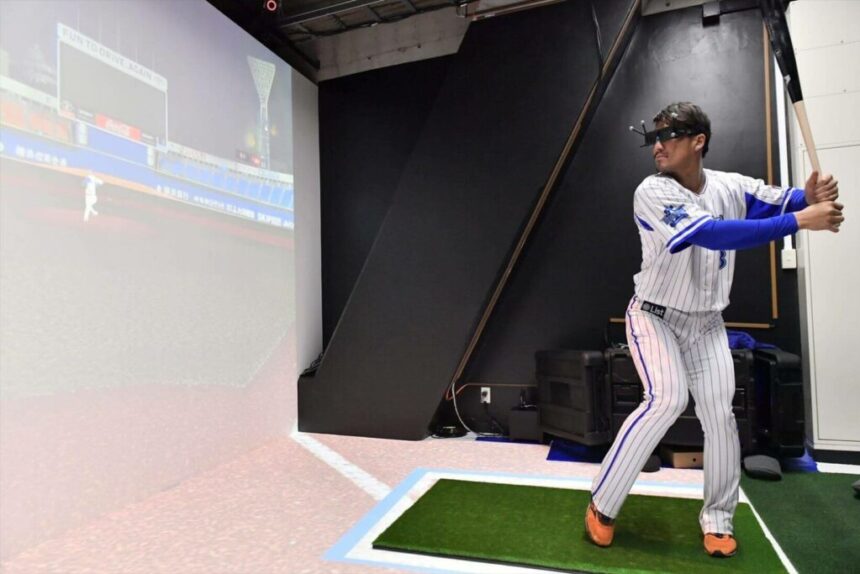Virtual Reality (VR) has rapidly emerged as one of the most transformative technologies in modern sports training. By immersing athletes in high-fidelity simulated environments, VR sports training simulations allow players to enhance cognitive skills, improve decision-making, and practice under game-like pressure—without the physical wear and tear of actual play. From elite football clubs to Olympic training centers, VR is now a core component of cutting-edge sports science and performance development.
How VR Training Works in Sports
At the core of VR sports training are immersive simulations powered by motion tracking, 360-degree video, and AI-generated game scenarios. Athletes wear VR headsets—often paired with motion sensors, haptic feedback suits, and biometric monitors—to train in environments that mirror real-world matches.
Unlike traditional video analysis, VR allows full spatial awareness, enabling athletes to see plays unfold from a first-person perspective. They can revisit specific game situations, analyze decisions, and repeat scenarios thousands of times with precision, building muscle memory and mental sharpness.
For instance, a quarterback can simulate defensive formations and practice rapid decision-making under virtual pressure, or a striker in football can rehearse penalty kicks with dynamic goalie behavior based on historical data.
Sports Leading the VR Training Evolution
American Football
NFL teams like the Dallas Cowboys and San Francisco 49ers use VR to train quarterbacks, linemen, and wide receivers. Platforms such as STRIVR allow players to go through playbooks in immersive environments, improving mental reps and minimizing injury risk during practice.
Soccer/Football
Top-tier football clubs—including Manchester United, RB Leipzig, and PSV Eindhoven—use VR to help players read the field, react faster, and simulate high-pressure situations. VR is also used to train referees, goalkeepers, and youth academy players.
Basketball
NBA franchises employ VR simulations for tactical walkthroughs, free-throw scenarios under pressure, and court vision training. VR enables athletes to replay their own past games or simulate matchups against specific opponents.
Boxing and Combat Sports
VR sparring tools like Corner and The Thrill of the Fight enable boxers to work on timing, defensive reflexes, and fight strategies without taking damage. Coaches can simulate different fighting styles, helping athletes mentally prepare for opponents.
Golf
VR golf simulators like Full Swing and Phigolf help golfers analyze swing mechanics, club impact angles, and course strategy in lifelike environments. These tools are also widely used by amateurs and enthusiasts globally.
Benefits of VR Sports Training
- Cognitive Enhancement: Athletes sharpen spatial awareness, reaction time, and split-second decision-making by practicing mental repetitions in a game-speed environment.
- Injury Reduction: By replacing some physical drills with virtual reps, athletes lower their risk of overuse injuries and conserve energy during intense training cycles.
- Customizable Scenarios: Coaches can tailor simulations to replicate opponents’ tendencies, previous mistakes, or game-winning moments—creating ultra-specific drills for player development.
- Data Integration: VR platforms can be linked with biometric data, GPS stats, and video footage, creating a feedback-rich ecosystem for training insights and progress tracking.
- Remote Coaching and Rehab: Injured athletes or players training off-site can maintain game IQ and scenario familiarity through VR, making it ideal for rehabilitation or off-season work.
VR in Youth Development and Grassroots Training
Beyond professional teams, VR is making waves in youth sports and talent academies. Simulations democratize access to elite-level coaching by enabling young players to experience high-level play scenarios at minimal cost. It also boosts engagement through gamified drills and immersive learning—ideal for younger, tech-savvy athletes.
Organizations are also using VR to introduce new sports to children, break down barriers in underserved communities, and create inclusive, safe training environments for all genders and ability levels.
Limitations and Challenges
Despite its promise, VR in sports training still faces a few challenges:
- Cost: High-end VR systems with motion capture and biometric integration remain expensive for many clubs and schools.
- Realism Gap: While improving, VR still lacks the full sensory and physical realism of actual gameplay—especially for contact sports.
- Motion Sickness and Fatigue: Some athletes report discomfort or cognitive overload during extended VR sessions.
- Coach Adaptation: Effective use of VR requires tech-savvy coaches and integration with existing training models—something still evolving across sports.
The Future of VR in Sports Training
As hardware becomes more affordable and AI-generated simulations grow more lifelike, VR will likely become standard in elite and amateur sports programs alike. Integration with augmented reality (AR), digital twins, and neural feedback will take training personalization to the next level.
In the next five years, we can expect to see:
- Fully immersive team strategy rooms for planning and practice
- VR broadcasting that allows fans to view games from a player’s POV
- Cross-sport cognitive training programs using shared neural performance data
In Summary
VR sports training simulation is not just a technological innovation—it’s a strategic revolution that enhances how athletes think, react, and perform. By combining immersive learning with data-driven personalization, VR is preparing the next generation of sports professionals to compete smarter, safer, and faster than ever before.












